Piercy & Company’s uplifting refit for a London developer’s Savile Row HQ
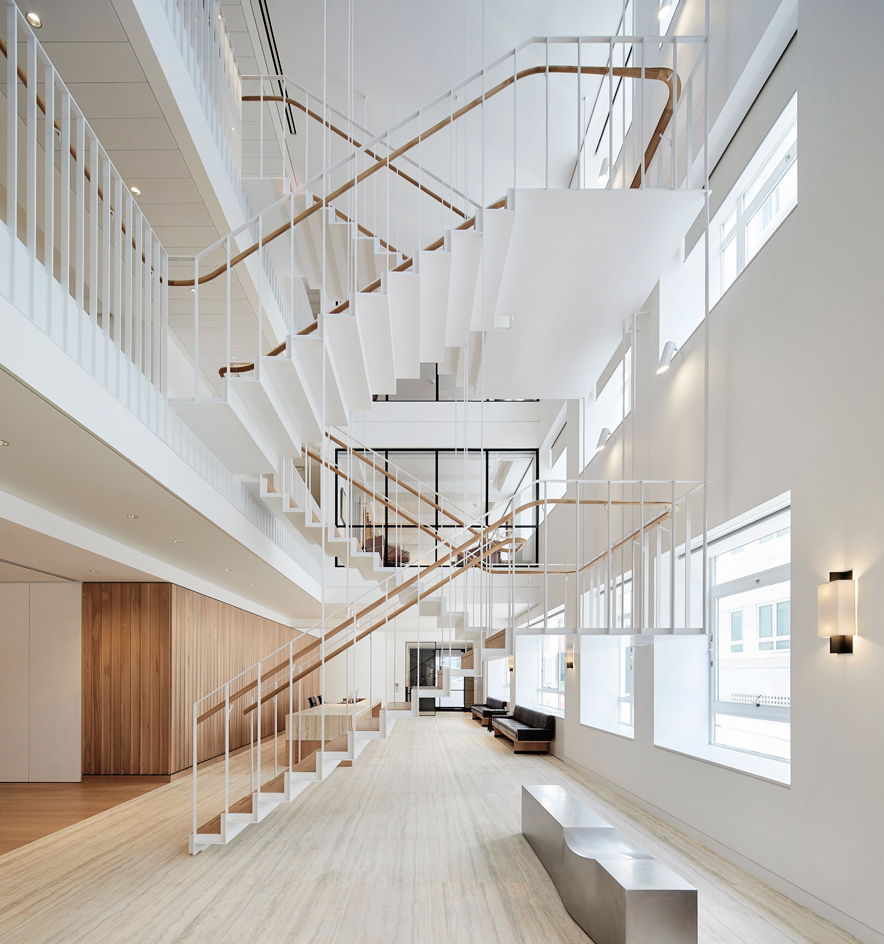
Derwent London has built a reputation as one of the UK’s more forward-thinking property developers. Since its foundation in the mid-1980s, the company is as adept at working within London’s historic fabric as it is at giving new life to tired slices of mundane modernism. Projects include the game-changing Angel Building in Islington, Shoreditch’s fashionable Tea Building and the new White Collar Factory, looming above Old Street’s ‘Silicon Roundabout’. So when it came to updating its own Savile Row HQ, the pressure was on to create a true showcase for its enlightened approach. The project was undertaken by Piercy & Company – which also built the Turnmill building in Clerkenwell for Derwent London – and the result is a warm, inviting and carefully crafted office, neatly tailored for the developer’s day-to-day operations.
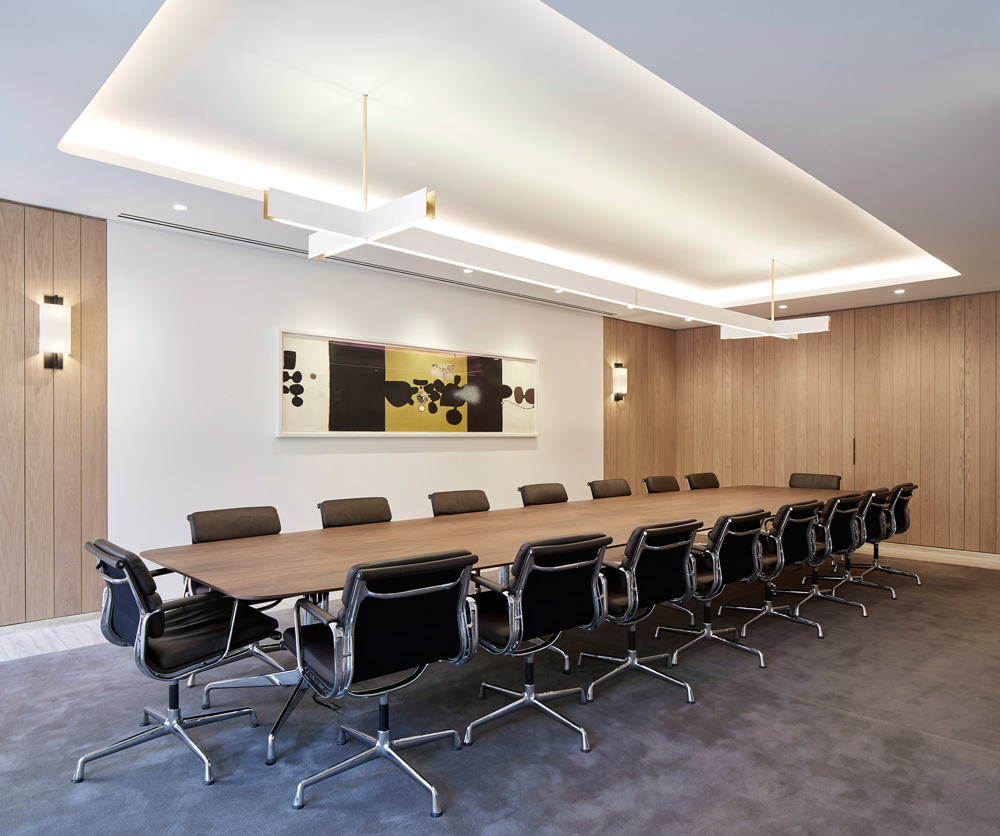
A screenprint by Victor Pasmore, Points of Contact No. 17 (1974), hangs in the meeting room.
Derwent London already owned the original art deco Mayfair building, with its offices occupying the upper two floors. These had been fitted out by Squire & Partners at the turn of the century, but more space was needed for the company’s team of 90. Although there was a lucrative opportunity to convert the space into flats, the company felt a need ‘to practise what it preached’. As design manager Tim Hyman explains, ‘we were doing our own house in effect – it was a personal project for us’. While architect Stuart Piercy describes the project as a Gesamtkunstwerk, Hyman is more prosaic, observing that the design covers everything ‘from the concrete to the cutlery’.
The new spaces are arranged around the structure of the company, with a ground-floor reception and meeting area designed to impress, not overwhelm. A new top-hung staircase rises up through an atrium carved out of the existing floor plan, making a beautiful – and expensive – statement, given the amount of pricey floor space that had to be removed for its installation. The developers are unrepentant. The upper floors give long views across Boyle Street and down Old Burlington Street towards the Royal Academy, while the stair void is flanked by the directors’ offices, rising up the atrium like a series of display cases.
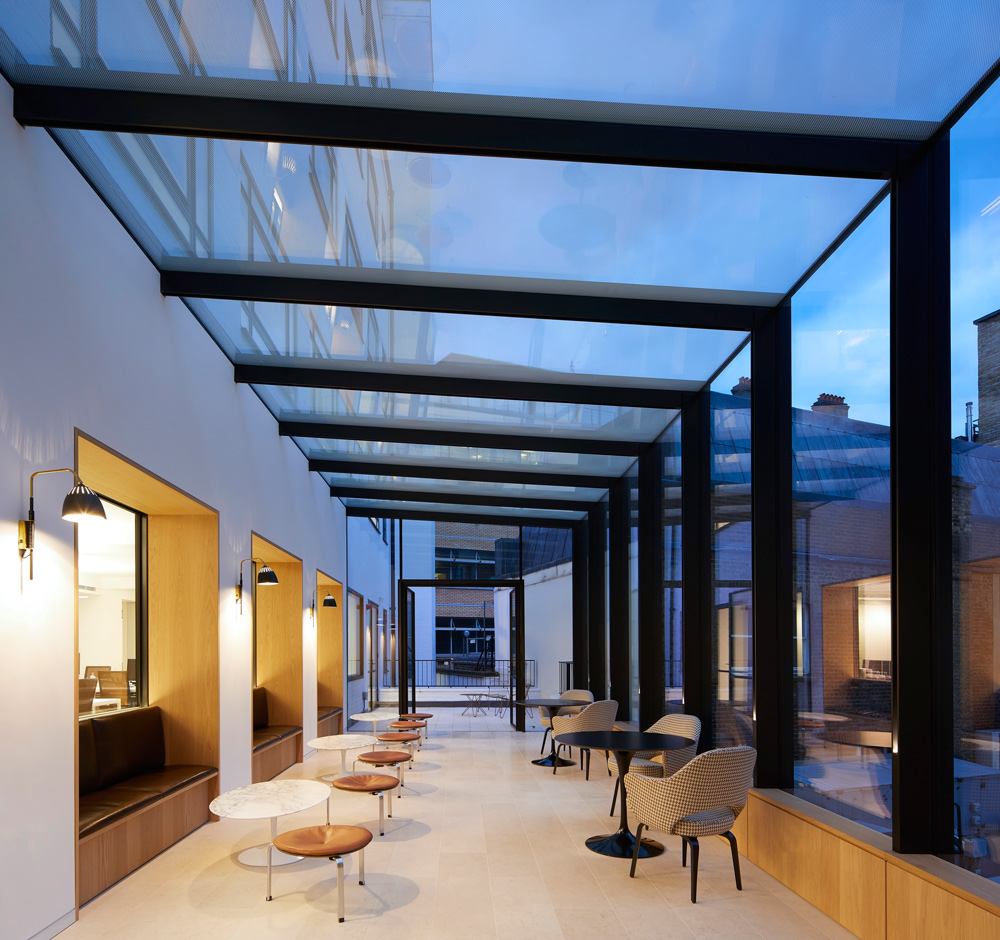
A winter garden on the first floor forms a social and entertaining space.
‘It’s very calm, very laid back, with all the modern artisanship that we like. We didn’t want it to be overly corporate,’ Hyman says, while Piercy adds: ‘It’s quite good to stay on the right side of ostentatious.’ The budget was hardly parsimonious, and as a result the attention to detail is superb. The millimetre-perfect alignments of every Dinesen floorboard, the fluted cladding on the walls, the bookmatched patterns on the travertine marble and the lashings of Bill Amberg leather give the ground floor the feeling of an exquisite piece of cabinetry. Derwent’s contact book certainly helped. ‘It’s like having your favourite chef cook your favourite meal with your favourite ingredients,’ Hyman muses. Adds Piercy, ‘We’ve done many one-off houses, so we have a good understanding of materials.’ As a result, there is a sense of domestic scale in a commercial space, with materials and bespoke elements that are never outsized or unnecessarily corporate.
Derwent London is understandably delighted with the result. ‘We’ve always believed in “less is more”, and it can be more if what’s built looks absolutely beautiful,’ notes director Simon Silver from his office, which houses his collection of quirky midcentury pieces. ‘We thrive on collaborations with architects and suppliers,’ he adds. Savile Row might only represent one per cent of Derwent London’s portfolio, but it’s a showcase for three decades’ worth of creative collaborations.
As originally featured in the November 2017 issue of Wallpaper* (W*224)
Step behind the scenes for the ’making of’ Derwent’s new Savile Row HQ. Video: Nick Ballon
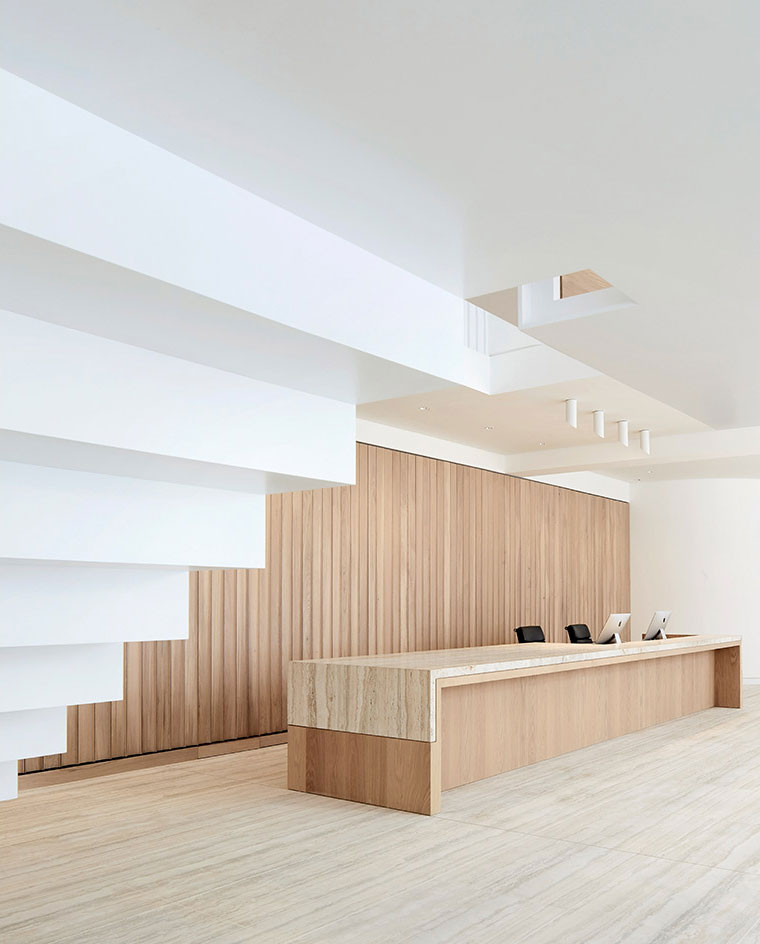
The ground floor reception area.
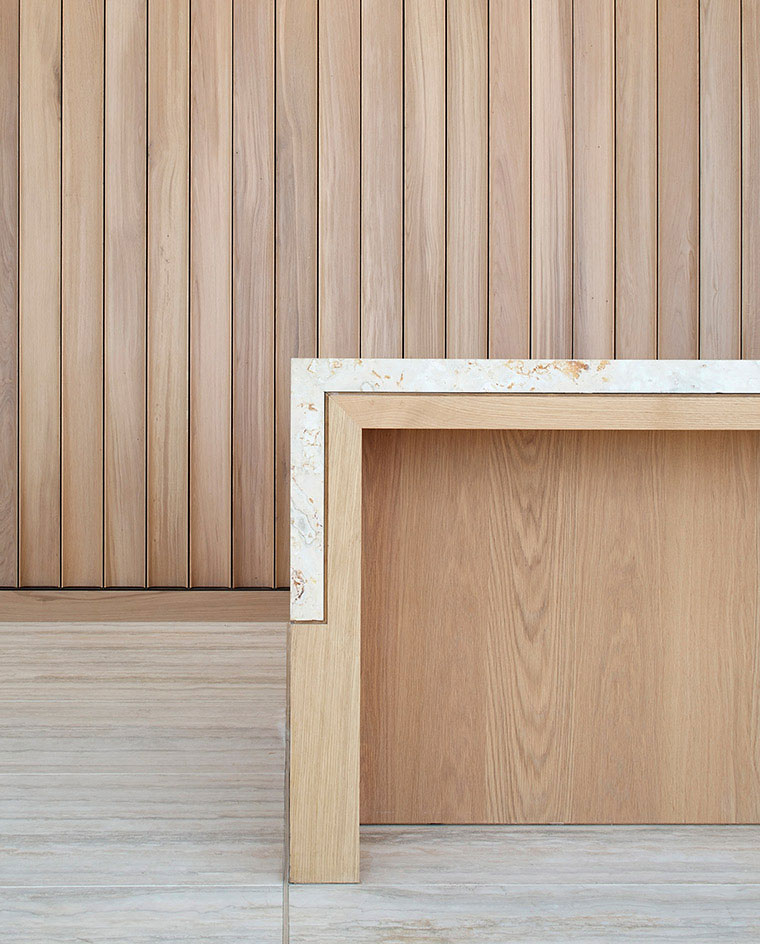
The ground floor reception desk was created by Piercy & Company in collaboration with Benchmark
INFORMATION
For more information, visit the Piercy & Company website and the Derwent London website
Wallpaper* Newsletter
Receive our daily digest of inspiration, escapism and design stories from around the world direct to your inbox.
Jonathan Bell has written for Wallpaper* magazine since 1999, covering everything from architecture and transport design to books, tech and graphic design. He is now the magazine’s Transport and Technology Editor. Jonathan has written and edited 15 books, including Concept Car Design, 21st Century House, and The New Modern House. He is also the host of Wallpaper’s first podcast.
-
 All-In is the Paris-based label making full-force fashion for main character dressing
All-In is the Paris-based label making full-force fashion for main character dressingPart of our monthly Uprising series, Wallpaper* meets Benjamin Barron and Bror August Vestbø of All-In, the LVMH Prize-nominated label which bases its collections on a riotous cast of characters – real and imagined
By Orla Brennan
-
 Maserati joins forces with Giorgetti for a turbo-charged relationship
Maserati joins forces with Giorgetti for a turbo-charged relationshipAnnouncing their marriage during Milan Design Week, the brands unveiled a collection, a car and a long term commitment
By Hugo Macdonald
-
 Through an innovative new training program, Poltrona Frau aims to safeguard Italian craft
Through an innovative new training program, Poltrona Frau aims to safeguard Italian craftThe heritage furniture manufacturer is training a new generation of leather artisans
By Cristina Kiran Piotti
-
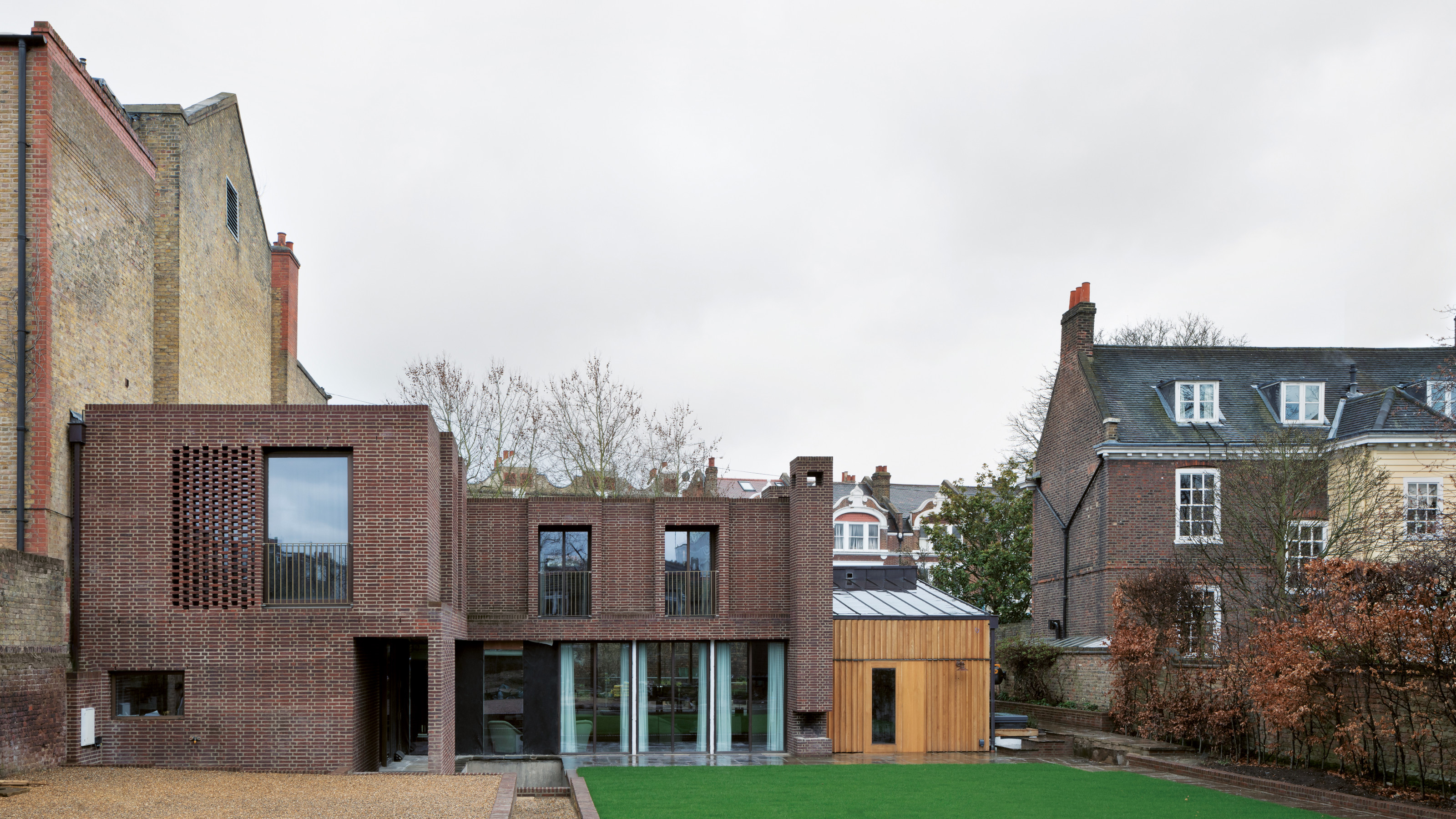 A new London house delights in robust brutalist detailing and diffused light
A new London house delights in robust brutalist detailing and diffused lightLondon's House in a Walled Garden by Henley Halebrown was designed to dovetail in its historic context
By Jonathan Bell
-
 A Sussex beach house boldly reimagines its seaside typology
A Sussex beach house boldly reimagines its seaside typologyA bold and uncompromising Sussex beach house reconfigures the vernacular to maximise coastal views but maintain privacy
By Jonathan Bell
-
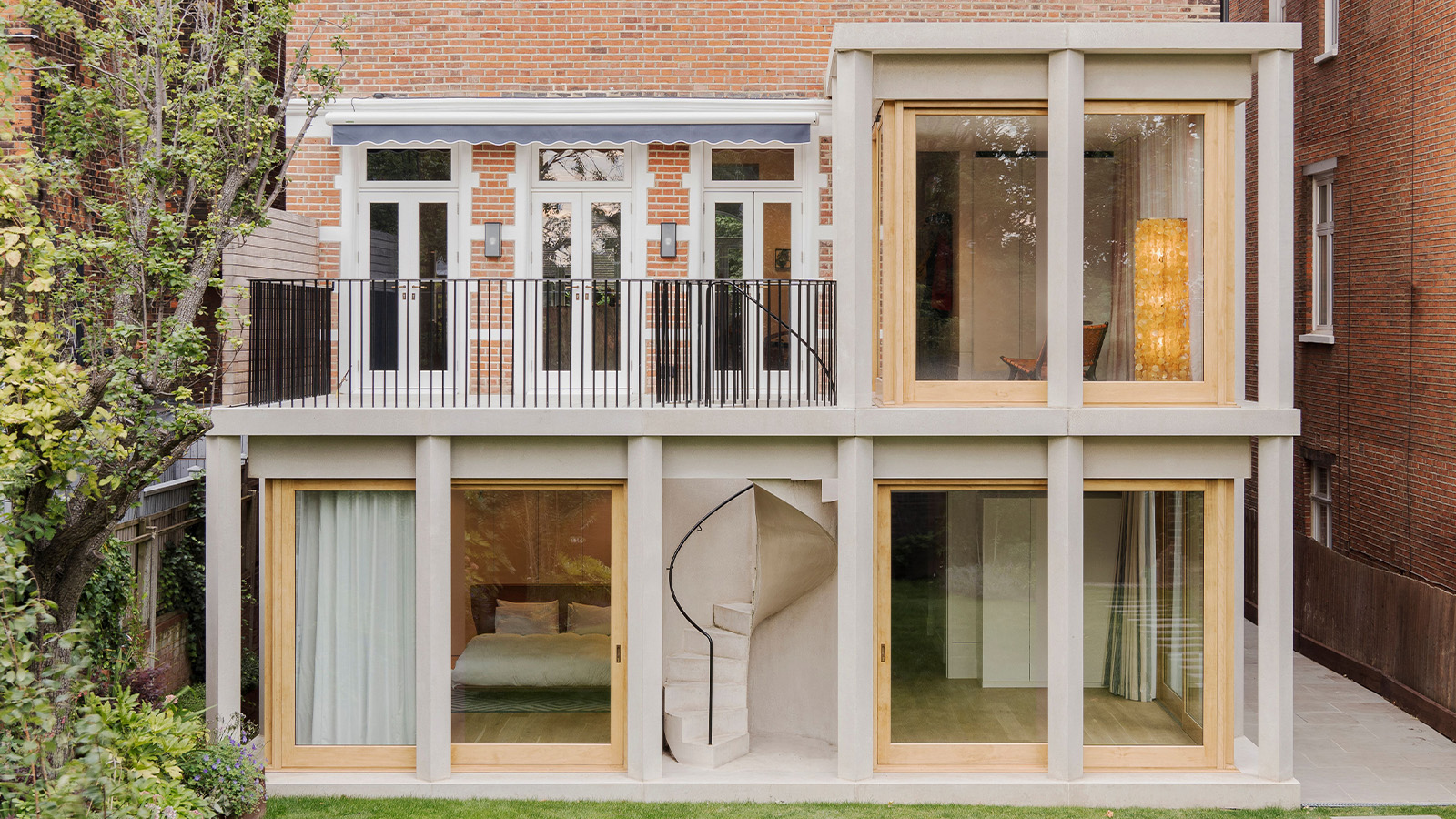 This 19th-century Hampstead house has a raw concrete staircase at its heart
This 19th-century Hampstead house has a raw concrete staircase at its heartThis Hampstead house, designed by Pinzauer and titled Maresfield Gardens, is a London home blending new design and traditional details
By Tianna Williams
-
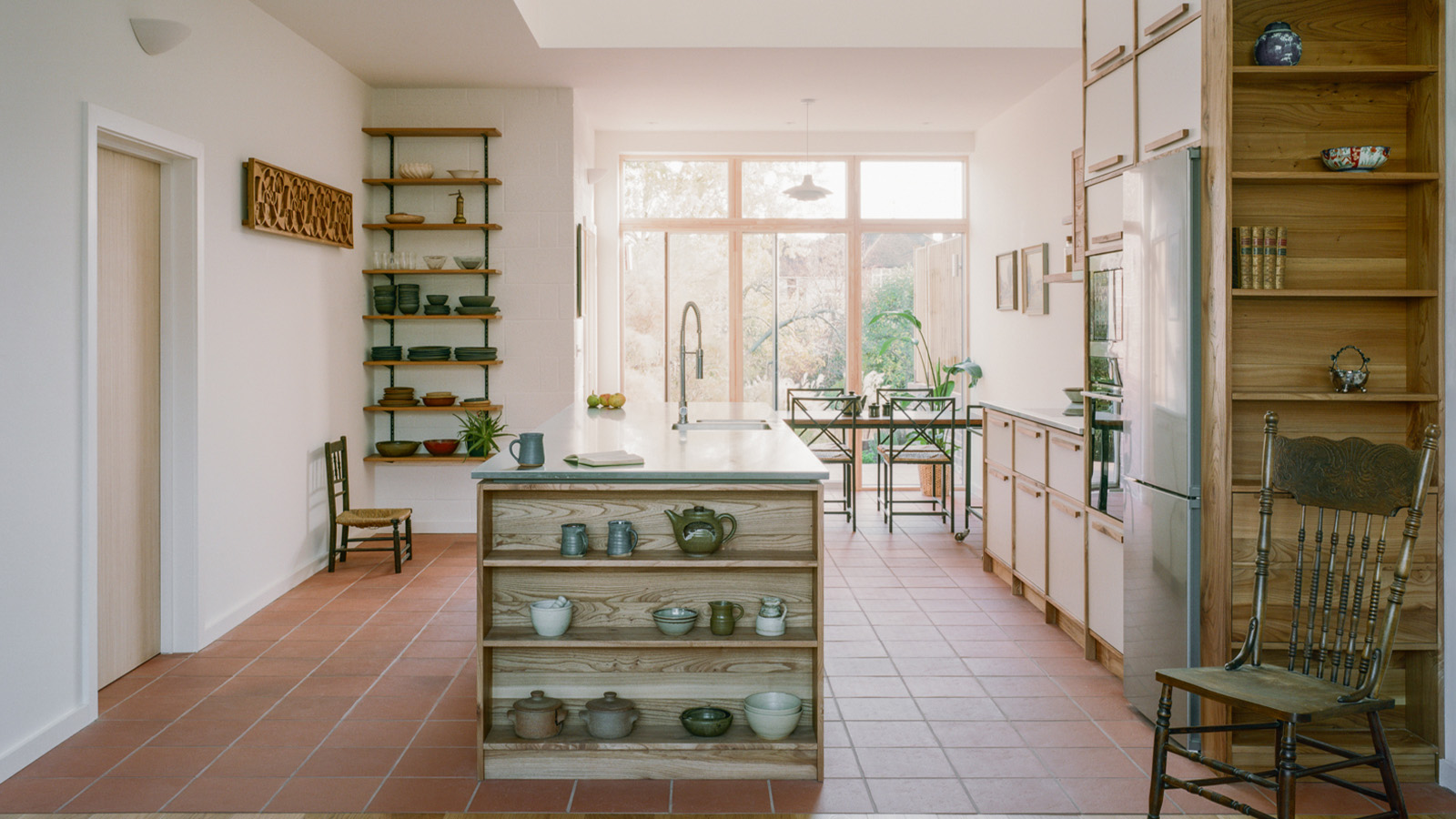 An octogenarian’s north London home is bold with utilitarian authenticity
An octogenarian’s north London home is bold with utilitarian authenticityWoodbury residence is a north London home by Of Architecture, inspired by 20th-century design and rooted in functionality
By Tianna Williams
-
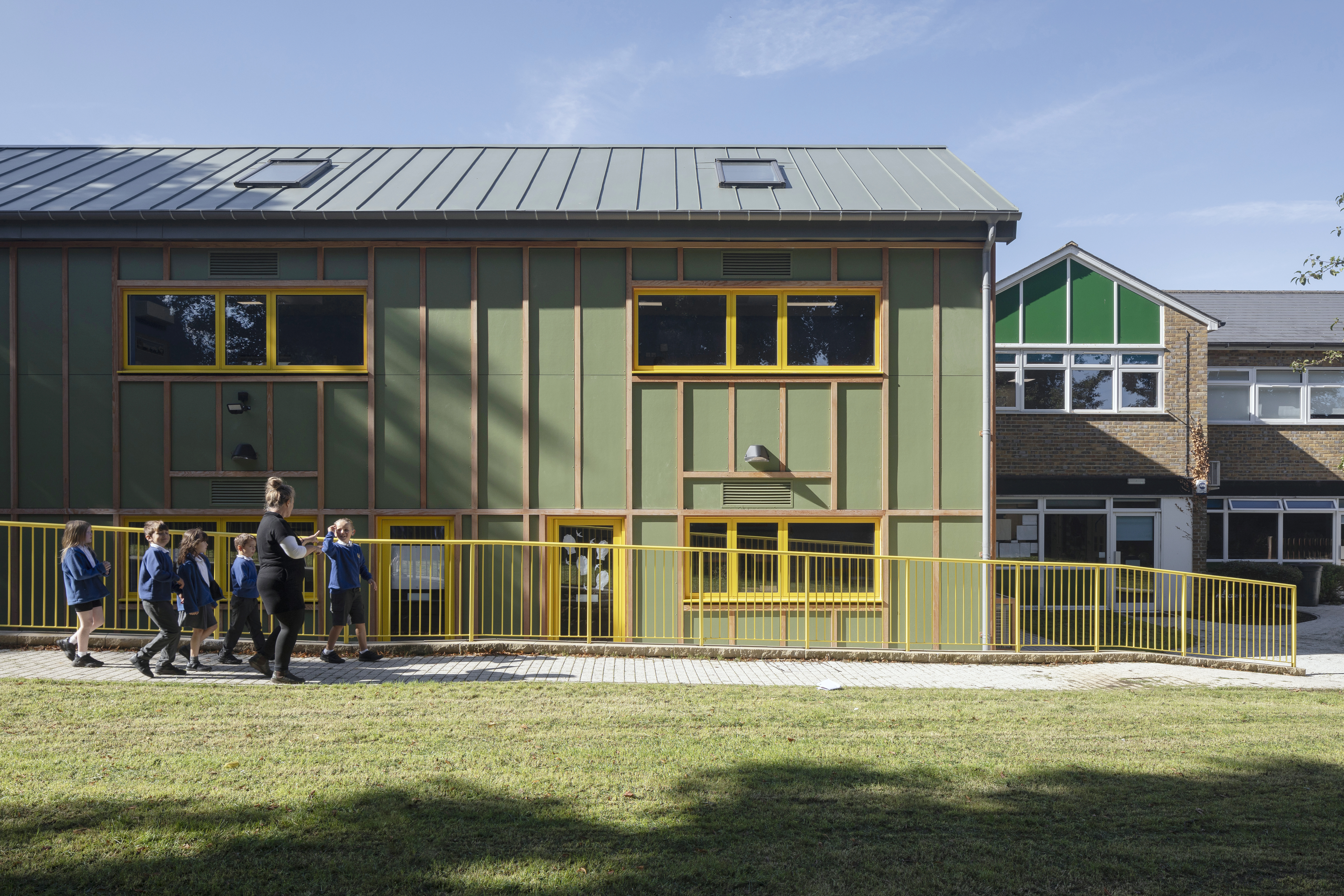 What is DeafSpace and how can it enhance architecture for everyone?
What is DeafSpace and how can it enhance architecture for everyone?DeafSpace learnings can help create profoundly sense-centric architecture; why shouldn't groundbreaking designs also be inclusive?
By Teshome Douglas-Campbell
-
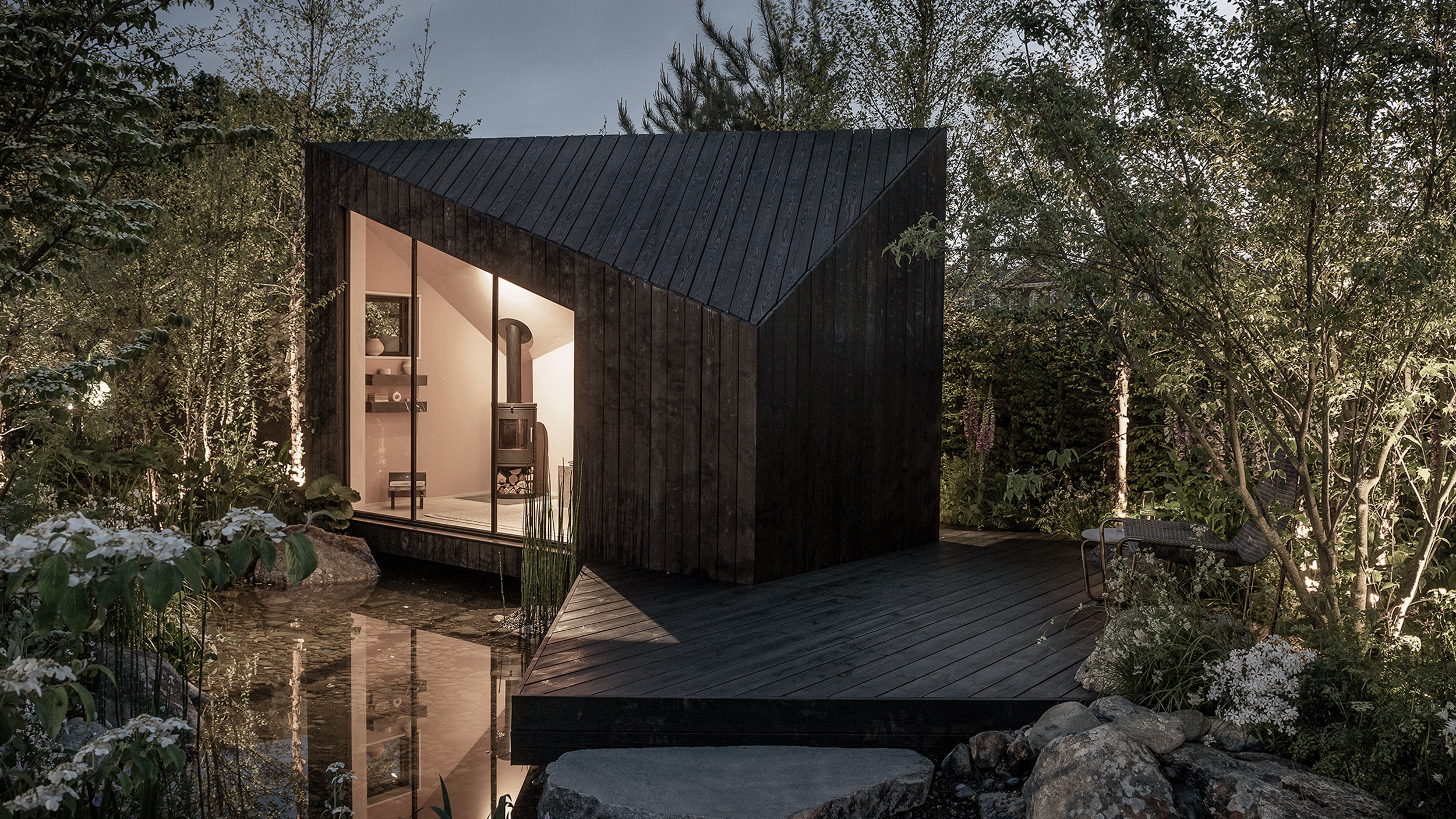 The dream of the flat-pack home continues with this elegant modular cabin design from Koto
The dream of the flat-pack home continues with this elegant modular cabin design from KotoThe Niwa modular cabin series by UK-based Koto architects offers a range of elegant retreats, designed for easy installation and a variety of uses
By Jonathan Bell
-
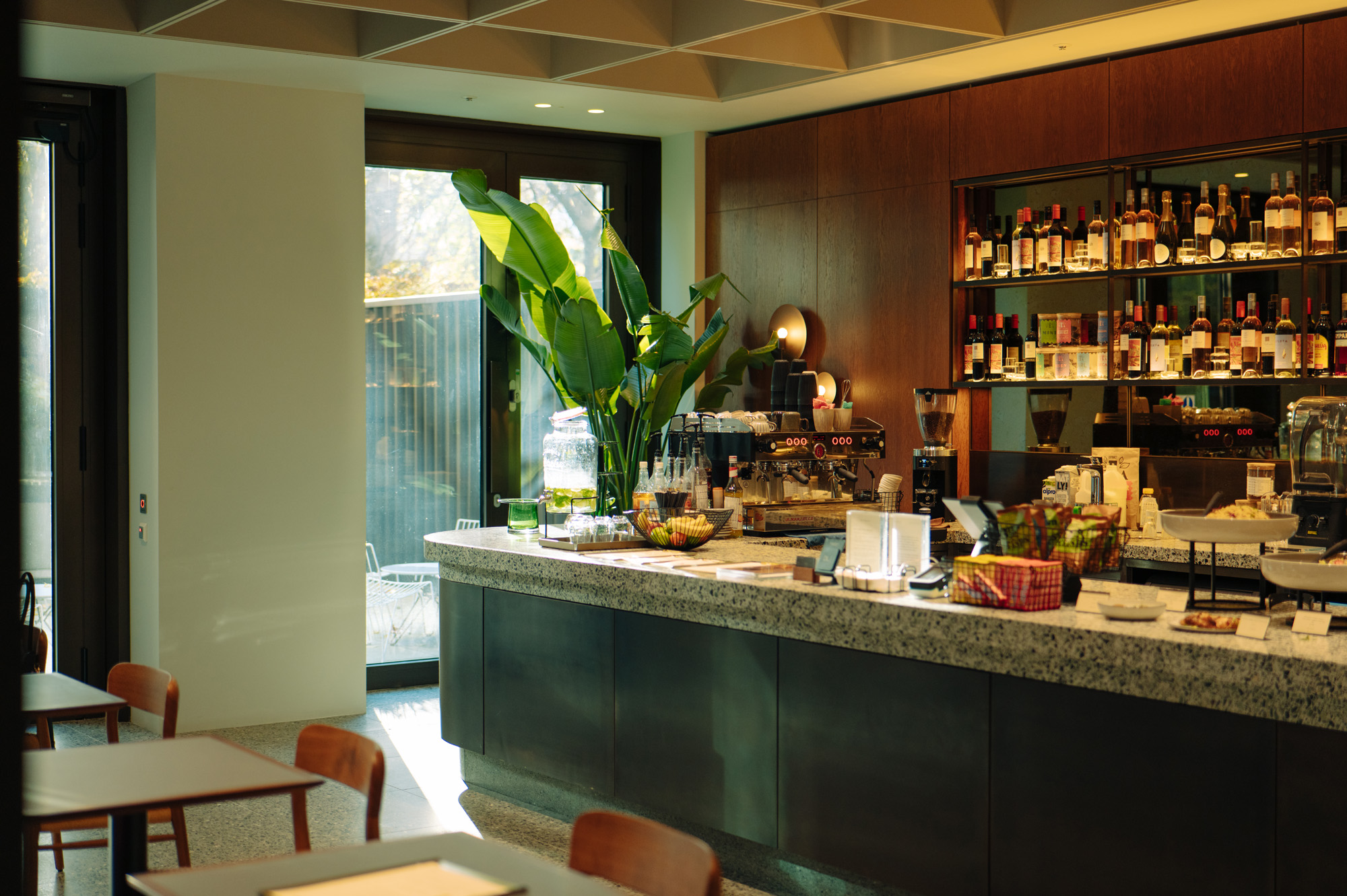 Are Derwent London's new lounges the future of workspace?
Are Derwent London's new lounges the future of workspace?Property developer Derwent London’s new lounges – created for tenants of its offices – work harder to promote community and connection for their users
By Emily Wright
-
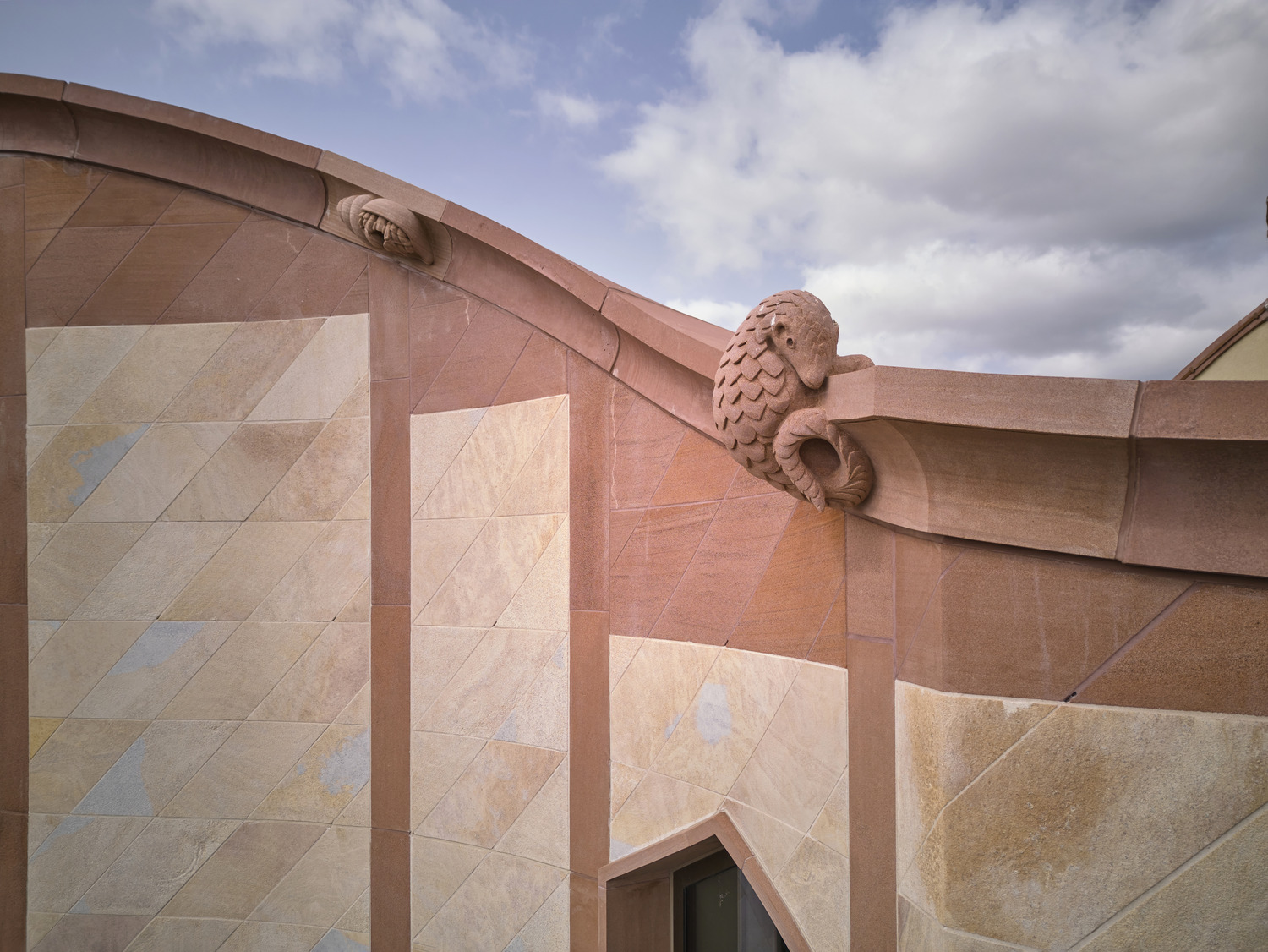 Showing off its gargoyles and curves, The Gradel Quadrangles opens in Oxford
Showing off its gargoyles and curves, The Gradel Quadrangles opens in OxfordThe Gradel Quadrangles, designed by David Kohn Architects, brings a touch of playfulness to Oxford through a modern interpretation of historical architecture
By Shawn Adams